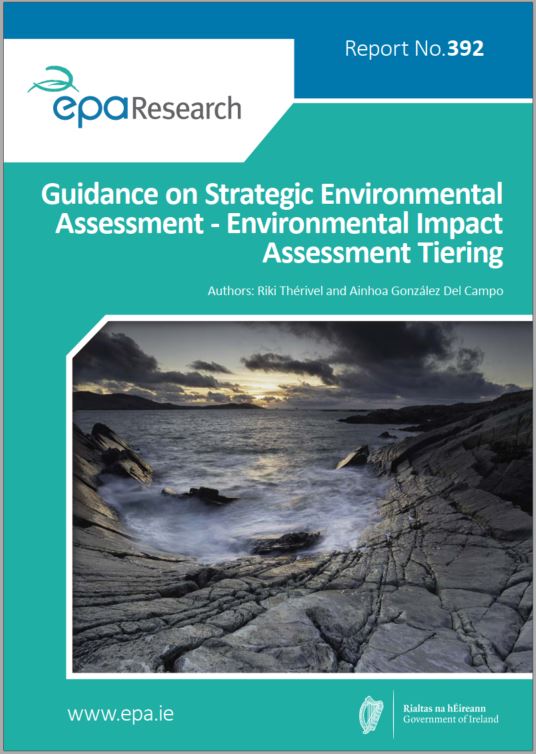Authors: Riki Thérivel and Ainhoa González Del Campo
Summary: This Guidance on SEA-EIA Tiering aims to improve the links between SEA and EIA, using a range of good practice examples. It focuses on improving communication between SEA and EIA: getting SEA practitioners to write SEAs with EIAs in mind, and EIA practitioners to refer to SEAs in their EIA Reports. It also identifies institutional issues that can set a context which restricts tiering, including ‘silo assessment’, lack of training, and restrictive legal requirements.

Watch the project highlights video
Strategic Environmental Assessments (SEAs) aim to identify and mitigate environmental impacts resulting from the implementation of plans and programmes (e.g. county development plans, wind energy strategies). Environmental Impact Assessments (EIAs) aim to do the same for projects (e.g. residential or windfarm projects) before planning permission is given. In theory, SEAs should set the context for, and inform, EIAs so that environmental considerations trickle down for environmental protection on the ground. EIAs could also provide data for SEAs, enhancing the evidence-base for strategic assessments and decisions. However, in practice, the lack of communication and links between SEA and EIA impede achieving the benefits of tiering. SEA data are rarely used in EIAs; SEA alternatives are sometimes referred to in EIAs but could set a clearer structure; SEA mitigation measures are generally not written with EIAs in mind and are rarely referred to in EIA Reports; and EIA monitoring rarely feeds back to SEAs. This reduces the effectiveness and efficiency of both SEAs and EIAs.
Better tiering allows strategic-level alternatives and public concerns to be better addressed at the strategic scale, so that these issues do not need to be revisited for each subsequent project. It allows urgent issues such as climate change and biodiversity loss, which require a strategic response, to be better considered in individual projects. It can allow strategic decisions for large-scale development to be made early on – for instance protecting strategic development sites from inappropriate development. SEA may also be able to restrict the scope of subsequent EIAs, saving time and resources. Although this all involves more work at the SEA stage, it can reduce the workload at the EIA stage, and help to ensure that plans and environmental objectives are better implemented.
This Guidance on SEA-EIA Tiering aims to improve the links between SEA and EIA, using a range of good practice examples. It focuses on improving communication between SEA and EIA: getting SEA practitioners to write SEAs with EIAs in mind, and EIA practitioners to refer to SEAs in their EIA Reports. It shows how:
It also identifies institutional issues that can set a context which restricts tiering, including ‘silo assessment’, lack of training, and restrictive legal requirements.
https://www.epa.ie/media/epa-2020/research/epa-funded-research/Report-cover-392.jpg